B&W Portraits – How to Capture Mood Using Tone
Today we’re going to take a deep dive into black & white portrait photography, specifically how to communicate mood in your photos. Read on to learn how to use light and tone with intention to convey a certain feel in stunning black & white portraits!
Tone – What Is It?
Tone is one of the most powerful ways to communicate mood in photos. But first… what is it?
When we talk about tone in photography – specifically in relation to black & white photography – it’s a measure of the lightness and darkness of every element in the photo, including the light.
With respect to tone, there are 3 types of images:
- Low key – contains mostly dark tones and low light
- High key – contains mostly light tones and brighter light
- Midtoned – contains mostly mid tones and light that is not too dark and not too light
And when we say an image has good tonal range, we mean it has a good range of blacks, whites (or shadows and highlights), and a variation of tones in between. So if your portrait subject was in crisp, bright light, and is wearing a black t-shirt with a sky blue scarfe… you’d have a good tonal range.
The article below has a really great explanation about tone and tonal range which will change what you see through the viewfinder forever!
Related: 5 Ingredients for a Stunning B&W Photo
The next 3 images are an example of the three.
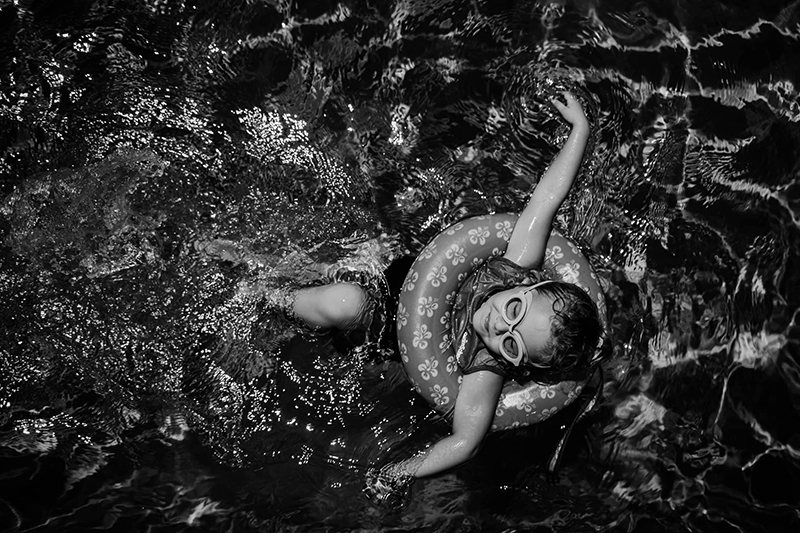
Lisa Clemson, Enthusiast Grad – low key image
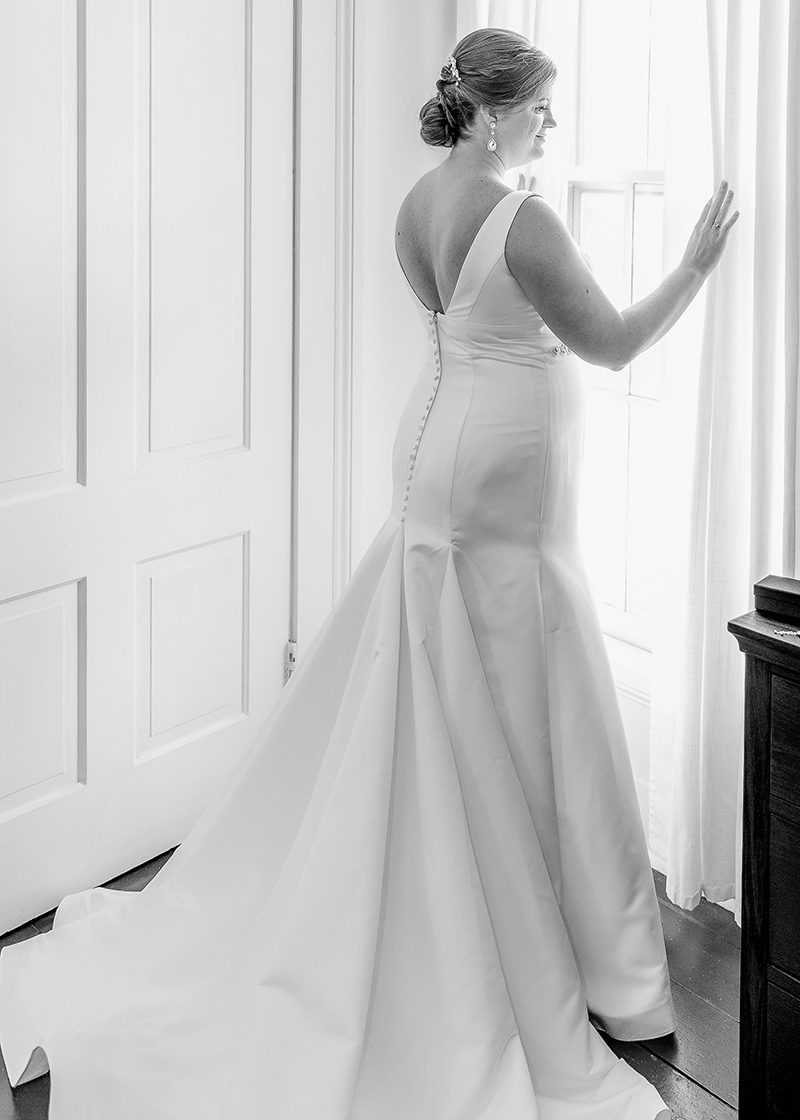
Desiree Wade, Enthusiast Grad – high key image
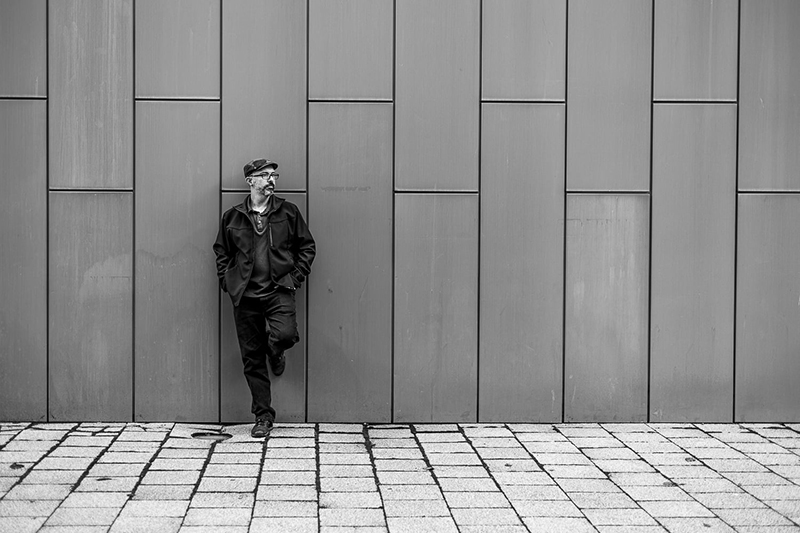
Angela McIntyre, Advanced Grad – midtoned image
How to Add Tone to Your Images
That’s a trick header! Everything in your photo – including the light – will add tone to your image whether you’re trying to or not. For example:
- Dark colours, low light, and shadows will add dark tones
- Light colours and bright light will add light tones
- Mid range colours and light that is not too low and not too bright will add midtones
Use Tone to Communicate Mood
The darkness or lightness of a photo has the power to make the viewer feel a certain way, so you can choose to use a predominance of one tone intentionally as a way to communicate mood.
- Low key – or dark & moody – can convey mystery, tension, drama, and generally feels more emotional
- High key – or light & airy – can convey a sense of playfullness, fun, happiness, simplicity
- Midtoned – a midtoned photo is neutral, and can convey a sense of calm or neutrality.
You might notice a lot of photographers are drawn to either low key or high key, and their Insta grid will be filled with a very recognisable style as a result. Let’s learn how to shoot each one!
1. Dark & Moody B&W Portrait
The following images are dark toned B&W’s. They would have mostly black and dark tones in the form of low key lighting, dark colours, with a little pop of high key light, or light coloured elements or clothing.
In this portrait, there was only a little natural light in the room, and she’s softly lit by window light. Combine that with a light coloured balloon and her tutu and there’s a pop of highlights to give it a little depth. These tones add a sense of the quiet contemplation going on, perhaps a quiet moment after a round of play, or the party is over and the last guest just left.
Related: How to Edit a Moody Portrait
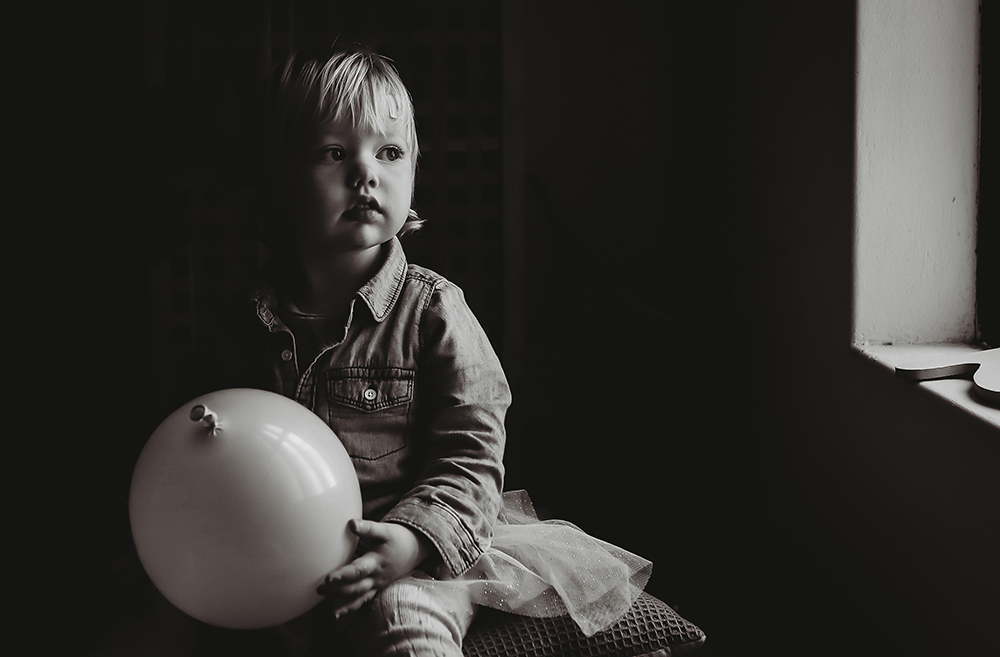
Christie Veen, Advanced Grad
In this scene the light was deliberately kept low for a birth. So even though in reality there are lots of light tones in the walls which take up a big part of the frame, the low key light has muted them to a mid tone and combined together, created a low key portrait. In turn it’s helped convey the mood in the room at the time which is a momentous, dramatic occasion.
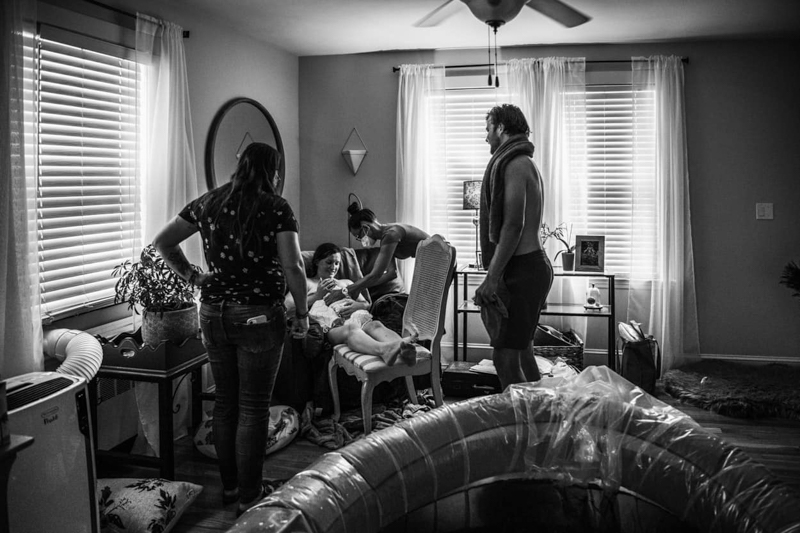
Jennifer Magnuson, Advanced Grad
This dramatic portrait is created by shooting in a room again with little natural light, with the subject positioned next to soft light coming through an open doorway. Desiree has exposed for the highlights so as not to blow them out, and that lets the shadows fall away.
If you’re interested in exploring the topic of portrait lighting techniques, we dive deep into it on our Advanced Photography Course!
Related: Easy Dramatic Light Portraits

Desiree Wade, Enthusiast Grad
2. Light and Airy B&W Portrait
A light toned black & white photo has mostly pale colours and bright light, with a pop of darker tones to give it depth.In this portrait the background is white, the light is bright, and the exposure is as light as she could go without blowing out the highlights on her skin. No extra elements were needed for contrast as the very fact of her dark hair adds an eye-catching pop of deep tones. The simple set up and tones gives it a strong feel of simplicity and really draws us to the subject.
Related: 3 Easy B&W Photo Editing Methods
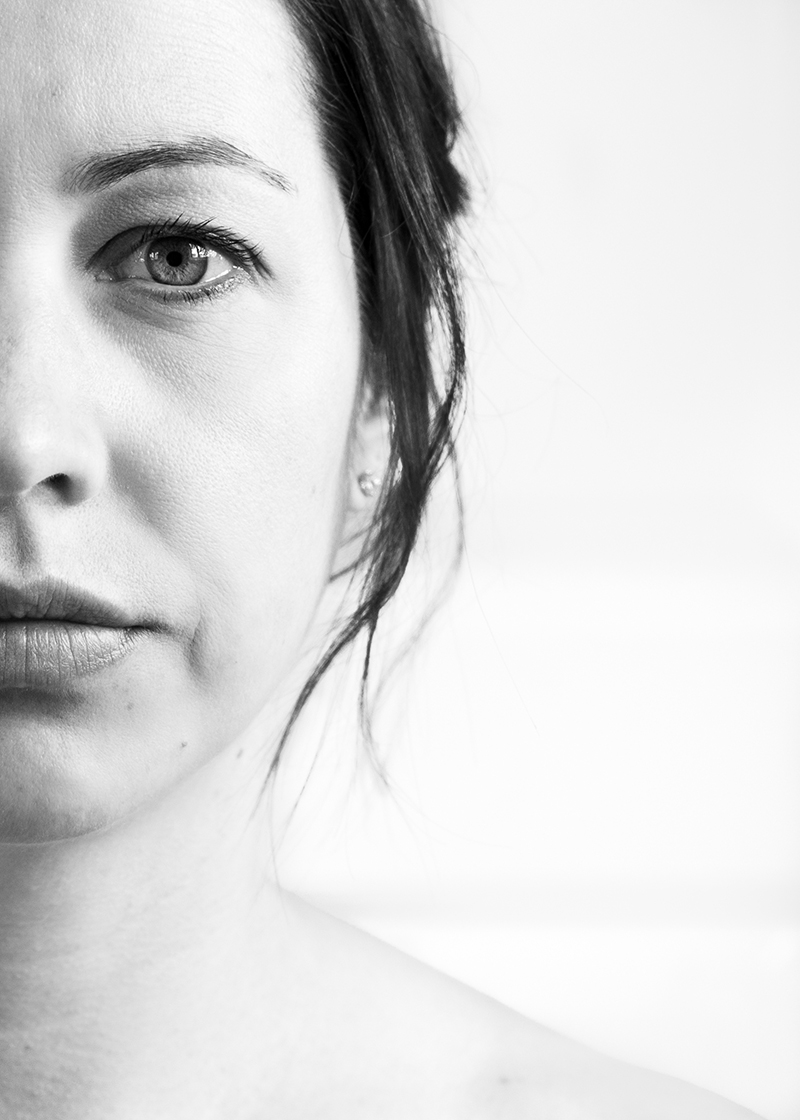
Claire Roads, Advanced Grad
The light tones across this whole image are a perfect way to communicate this everyday moment with a sense of childhood fun.
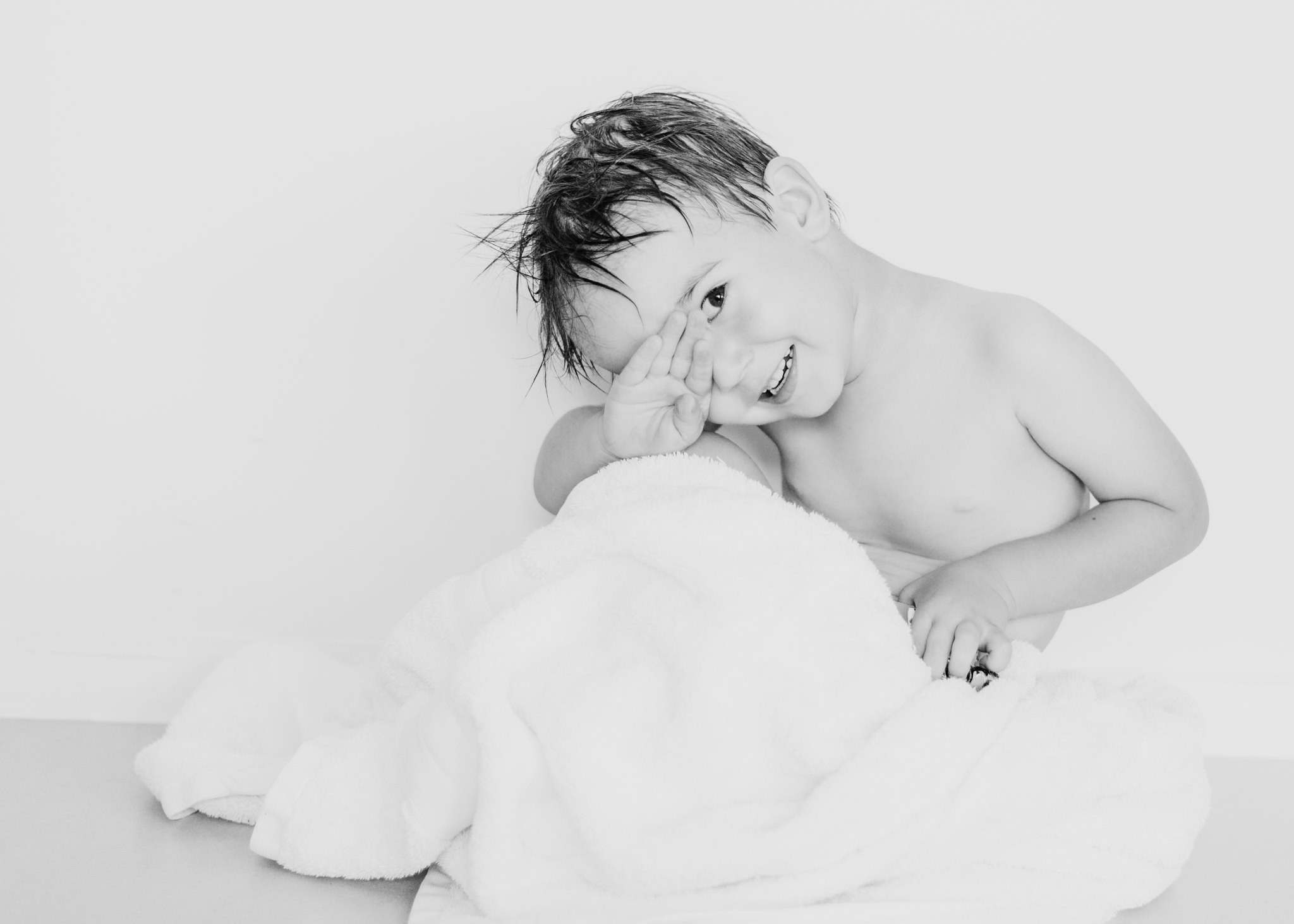
Amber Shay, Advanced Grad
3. Midtoned B&W Portrait
Mid toned photos have more tones that are about halfway between black and white than any other. It tends to be quite neutral but if you’re not drawn to either high or low key black & whites, then this style is for you.
However, there is a risk when shooting using midtoned images of ending up with an image that is flat, with a subject that blends into the surroundings. The concept of flat black & whites is talked about in more depth in this article.
The trick to avoiding this is to make sure you also incorporate some highlights (whites) or shadows (blacks) (or both). This mid toned portrait has some contrast through her black pants, and grass behind her is a little darker than a midtone. Also, more subtly there is gentle shadowing on her face created by her hair which helps to add some depth.

Louise Glendon, Click Love Grow
At the end of the day, all art is a form of communication. So we hope this blog post opened you up to the idea of shooting more intentionally using black & white photography as your tool!
Join my new workshop and learn How to Shoot Pro-Quality Photos With Your DSLR… and it’s totally FREE to join! Register here…

Leave a Reply Cancel reply
PRIVACY POLICY & SITE TERMS AND CONDITONS
CLICK LOVE GROW ™ Pty Ltd - COPYRIGHT 2024 ©
x
Join Now
Enter your info below to join the challenge!
Want a friendly reminder when I go live?
Pop in your number and I’ll shoot you a text.
* We will send text reminders for our live calls during the challenge! Reply ‘STOP’ to end or ‘HELP’ for help.
We promise not to ever share your details with anyone or send you spam! Check our privacy policy and terms of service.
Be the first to comment